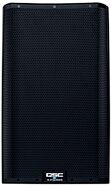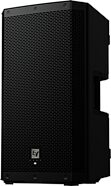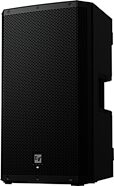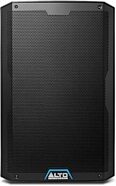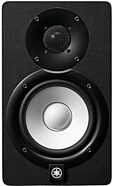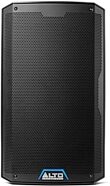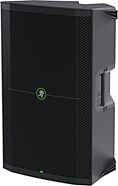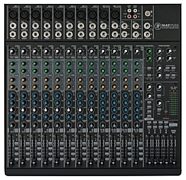
Mackie 1642VLZ4 16-Channel Mixer
Trust Mackie to deliver high headroom, low noise, and serious build quality in a super-compact 16-channel mixer. The 1642 VLZ4 features 10 Onyx mic preamps.
$799.99
- 12 x$66.67
- 8 x$100.00
- No Credit Check6 x$133.33
- No Credit Check4 x$200.00
Mackie 1642-VLZ Pro 16-Channel Mixer
No longer available at zZounds
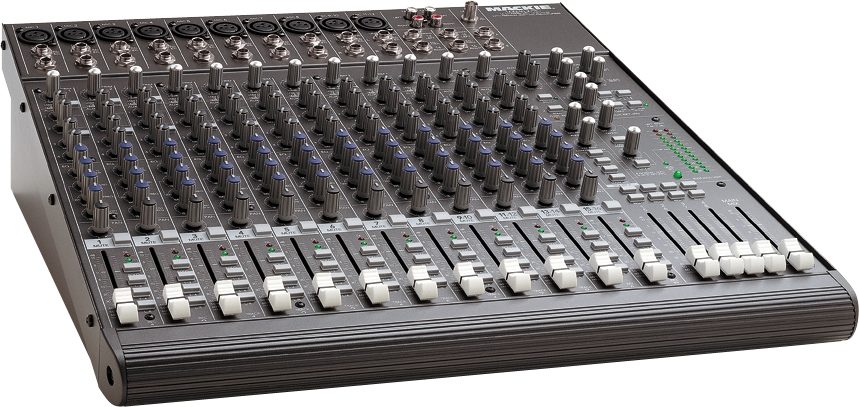
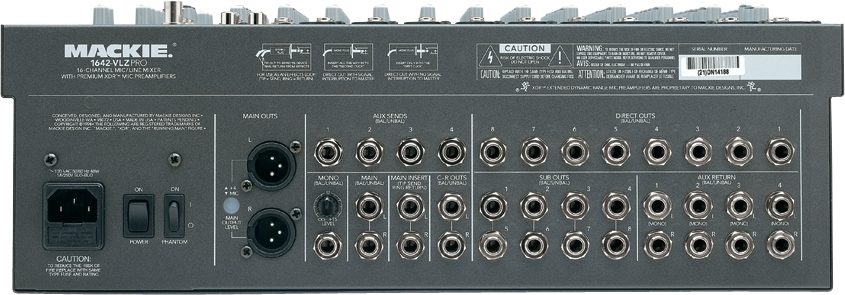
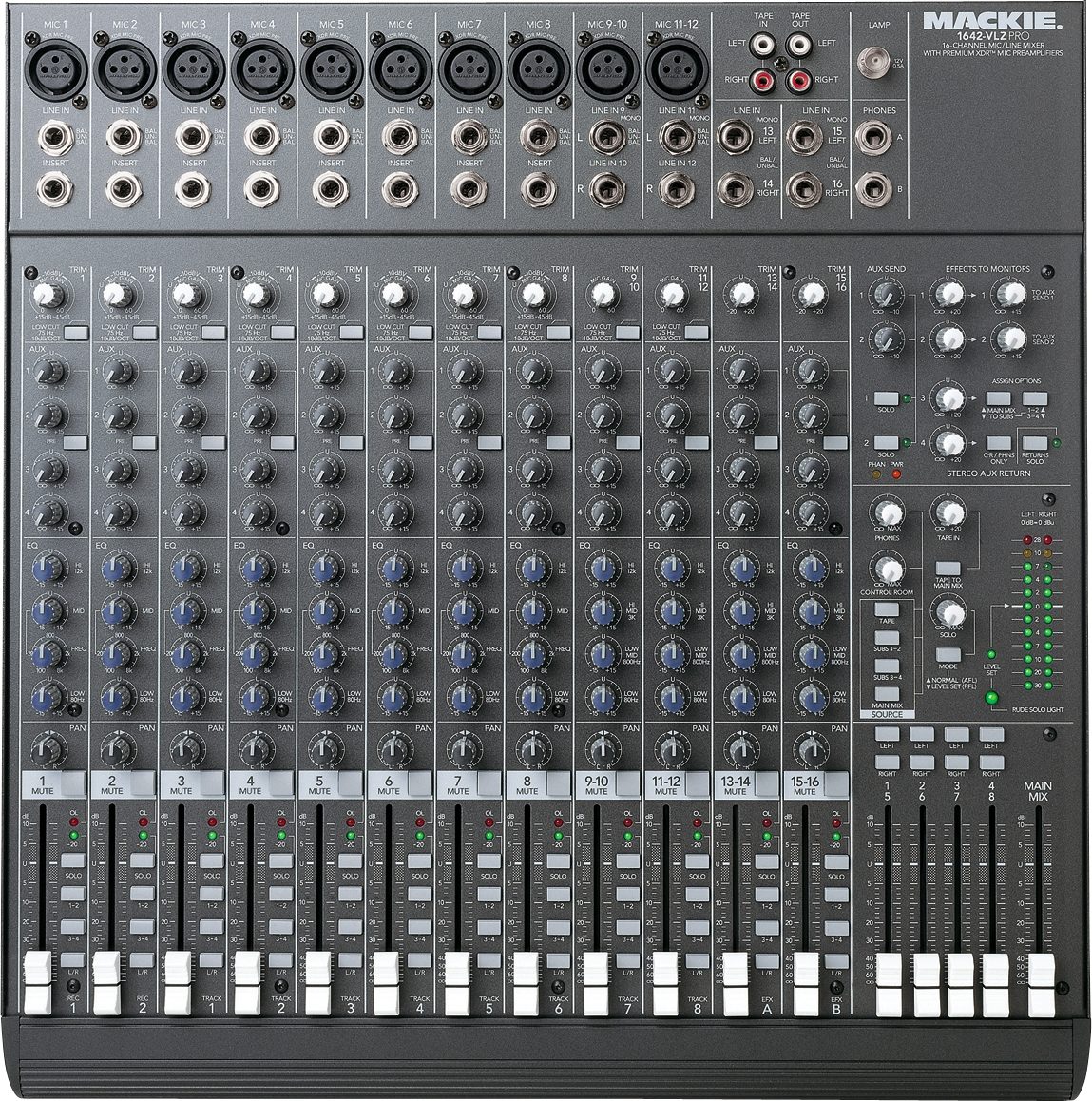
zZounds Gear Experts Say...
16x4x2 professional compact Mixer. 48V phantom power. 8 TRS channel inserts.
Overview
No matter how much you spend on a microphone, its ultimate performance depends on how it interacts with the preamp it's plugged into. Yes. We openly admit it: Many high-end mic preamps can effortlessly amplify the slightest sonic nuance, creating an aural panorama that's breathtakingly realistic, excitingly vivid, and truly 3-dimensional in scope. For years, they've provided fidelity that just hasn't been possible with the "stock" mic preamps built into mixing consoles. Until now.
To develop the new XDR (eXtended Dynamic Range) mic preamp, the engineering team started with blank paper, concerned only with matching or exceeding the performance of $500 to $2000-per-channel esoteric preamps. They went through hundreds of iterations and revs and spent countless hours subjectively listening (and arguing). They started all over again several times. They scoured the world for rare parts. Then they spent more time critically listening and evaluating the design with every high-end microphone you can think of. Then they brought in veteran recording and live sound engineers for more exhaustive listening tests.
What they ultimately ended up with is not just an awesome sounding design. XDR is also a) highly resistant to damage caused by "hot patching" (caused by routing a phantom powered mic through a patch bay); b) remarkably independent of cable-induced impedance variations; and c) able to reject extremely high RF levels without compromising high frequency response.
Because a mic preamp… read more must amplify faint one millivolt input signals up to a thousand-fold (60dB), its rectification components can also pick up radio frequency interference (RFI) from AM and FM stations, cell phones, and pager transmitters - even microwave ovens - and amplify them to audible levels.
Mackie assaulted RFI on 3 fronts. First, they incorporate bifilar wound DC pulse transformers with high permeability cores that reject RFI but don't attenuate the sound at 15kHz and above. Second, they use carefully matched, high-precision components for critical areas of the XDR preamplifier. Third, they direct-coupled the circuit from input to output and used pole-zero cancellation constant current biasing (which also avoids increased intermodulation distortion at high common mode signal levels).
Bottom line for the non-technical: you can use the new XDR mic preamps at the end of extremely-long cheap mic cables in an RFI-saturated urban environment while talking on your cell phone... without hearing a trace of RFI.
If a mic preamp isn't designed right, it will actually sound different depending on the impedance of the microphone and the cable load! XDR's Controlled Interface Input Impedance system accepts an enormous range of impedances without compromising frequency response.
0.0007% Total Harmonic Distortion. The lowest ever in any compact mixer.
Flat response. Not only are XDR mic preamps flat within a tenth of a dB across the bandwidth of any known microphone, but are also only 3dB down at an astonishing 192kHz!
Super-low intermodulation distortion at very high operating levels thanks to instrumentation-style balanced differential architecture, linear biasing, and use of DC-coupled pole-zero-cancellation constant current that frees the mic preamp from power supply fluctuations.
Think of the 1642 as an ultra-premium, esoteric mic preamp... that just happen to have really excellent compact mixers attached.
Features
Ultra-low noise, high headroom
16 channels (8 mic/line plus 2 stereo mic/line plus 2 stereo line)
10 new precision-engineered XDR(tm) Extended Dynamic Range premium studio-grade mic preamps with: Ultra-wide 0-60dB gain range, 130dB dynamic range for 24-bit, 192kHz sampling rate inputs, +22dBu line input handling, Distortion under 0.0007% THD (20Hz-20kHz)
48V phantom power
8 TRS channel inserts
Advanced DC pulse transformer RF rejection
60mm long-wearing log-taper faders
4 aux sends, level, pan, -20dB and OL LEDs on each channel
4 stereo aux returns, 8 direct outs
3-band active EQ with sweepable midrange on mono channels
4-band active EQ on stereo channels
18dB/oct. 75Hz Lo-Cut filters on mic channels
Control Room and Phones outputs with multi-input source matrix and separate level controls for each
Balanced inputs and outputs (except inserts)
Steel chassis, sealed rotary controls
Rack mountable read less
To develop the new XDR (eXtended Dynamic Range) mic preamp, the engineering team started with blank paper, concerned only with matching or exceeding the performance of $500 to $2000-per-channel esoteric preamps. They went through hundreds of iterations and revs and spent countless hours subjectively listening (and arguing). They started all over again several times. They scoured the world for rare parts. Then they spent more time critically listening and evaluating the design with every high-end microphone you can think of. Then they brought in veteran recording and live sound engineers for more exhaustive listening tests.
What they ultimately ended up with is not just an awesome sounding design. XDR is also a) highly resistant to damage caused by "hot patching" (caused by routing a phantom powered mic through a patch bay); b) remarkably independent of cable-induced impedance variations; and c) able to reject extremely high RF levels without compromising high frequency response.
Because a mic preamp… read more must amplify faint one millivolt input signals up to a thousand-fold (60dB), its rectification components can also pick up radio frequency interference (RFI) from AM and FM stations, cell phones, and pager transmitters - even microwave ovens - and amplify them to audible levels.
Mackie assaulted RFI on 3 fronts. First, they incorporate bifilar wound DC pulse transformers with high permeability cores that reject RFI but don't attenuate the sound at 15kHz and above. Second, they use carefully matched, high-precision components for critical areas of the XDR preamplifier. Third, they direct-coupled the circuit from input to output and used pole-zero cancellation constant current biasing (which also avoids increased intermodulation distortion at high common mode signal levels).
Bottom line for the non-technical: you can use the new XDR mic preamps at the end of extremely-long cheap mic cables in an RFI-saturated urban environment while talking on your cell phone... without hearing a trace of RFI.
If a mic preamp isn't designed right, it will actually sound different depending on the impedance of the microphone and the cable load! XDR's Controlled Interface Input Impedance system accepts an enormous range of impedances without compromising frequency response.
0.0007% Total Harmonic Distortion. The lowest ever in any compact mixer.
Flat response. Not only are XDR mic preamps flat within a tenth of a dB across the bandwidth of any known microphone, but are also only 3dB down at an astonishing 192kHz!
Super-low intermodulation distortion at very high operating levels thanks to instrumentation-style balanced differential architecture, linear biasing, and use of DC-coupled pole-zero-cancellation constant current that frees the mic preamp from power supply fluctuations.
Think of the 1642 as an ultra-premium, esoteric mic preamp... that just happen to have really excellent compact mixers attached.
Features
Ultra-low noise, high headroom
16 channels (8 mic/line plus 2 stereo mic/line plus 2 stereo line)
10 new precision-engineered XDR(tm) Extended Dynamic Range premium studio-grade mic preamps with: Ultra-wide 0-60dB gain range, 130dB dynamic range for 24-bit, 192kHz sampling rate inputs, +22dBu line input handling, Distortion under 0.0007% THD (20Hz-20kHz)
48V phantom power
8 TRS channel inserts
Advanced DC pulse transformer RF rejection
60mm long-wearing log-taper faders
4 aux sends, level, pan, -20dB and OL LEDs on each channel
4 stereo aux returns, 8 direct outs
3-band active EQ with sweepable midrange on mono channels
4-band active EQ on stereo channels
18dB/oct. 75Hz Lo-Cut filters on mic channels
Control Room and Phones outputs with multi-input source matrix and separate level controls for each
Balanced inputs and outputs (except inserts)
Steel chassis, sealed rotary controls
Rack mountable read less
Specs
Main Mix Noise
20Hz-20kHz bandwidth, 1/4 in. Main Out, channel Trims @ unity gain, channel EQs flat, all channels assigned to Main Mix, odd channels panned left, even channels panned right.
Main Mix fader unity, channel faders down: (90dB Signal to Noise Ratio, ref +4dBu) -86.5dBu
Main Mix fader @ unity, channel faders @ unity: -84.0dBu
Total Harmonic Distortion (THD)
1kHz @ +14dBu: 20Hz-20kHz
Mic in to Main out: below 0.0007%
Attenuation (Crosstalk)
1kHz relative to 0dBu, 20Hz--20kHz bandwidth, Line in, � in. Main Out, Trim @ unity.
Channel Mute switch engaged: -84dBu
Channel fader down: -84dBu
Frequency Response
Mic input to any output
20Hz to 60kHz: +0dB/-1dB
10Hz to 100kHz: +0dB/-3dB
Equivalent Input Noise (EIN)
Mic in to insert Send out, max gain
150-ohm termination: -129.5dBm unweighted
Common Mode Rejection (CMR)
Mic in to insert Send out, max gain
1kHz: better than 90dB
Maximum Levels
Mic In: +22dBu
All other inputs: +22dBu
Main Mix � in. TRS outputs: +28dBu
All other outputs: +22dBu
Impedances
Mic In: 1.3 kilohms
Channel Insert return: 2.5 kilohms
All other inputs: 10 kilohms or greater
Tape out: 1.1 kilohms
All other outputs: 120 ohms
3-Band EQ (Channels 1-8)
High Shelving: �15db @ 12kHz
Mid Peaking: �15dB, sweep 100Hz-8kHz
Low Shelving: �15db @ 80Hz
Low Cut Filter: 18dB/octave, -3dB @ 75Hz
4-Band EQ (Channels 9-16)
High Shelving: �15db @ 12kHz
Hi Mid Peaking: �15dB @ 3kHz
Lo Mid Peaking: �15dB @ 800kHz
Low Shelving: �15db @ 80Hz
Low Cut Filter: (Ch 9-12): 18dB/octave, -3dB @ 75Hz
Power Consumption
120VA.C., 50/60Hz, 40 watts
Fuse Ratings
120V: 1A Slo Blo, 5 x 20mm
220-240V: 0.5A Slo Blo, 5 x 20mm
Weight
18.2 lbs. (8.3 kg)
20Hz-20kHz bandwidth, 1/4 in. Main Out, channel Trims @ unity gain, channel EQs flat, all channels assigned to Main Mix, odd channels panned left, even channels panned right.
Main Mix fader unity, channel faders down: (90dB Signal to Noise Ratio, ref +4dBu) -86.5dBu
Main Mix fader @ unity, channel faders @ unity: -84.0dBu
Total Harmonic Distortion (THD)
1kHz @ +14dBu: 20Hz-20kHz
Mic in to Main out: below 0.0007%
Attenuation (Crosstalk)
1kHz relative to 0dBu, 20Hz--20kHz bandwidth, Line in, � in. Main Out, Trim @ unity.
Channel Mute switch engaged: -84dBu
Channel fader down: -84dBu
Frequency Response
Mic input to any output
20Hz to 60kHz: +0dB/-1dB
10Hz to 100kHz: +0dB/-3dB
Equivalent Input Noise (EIN)
Mic in to insert Send out, max gain
150-ohm termination: -129.5dBm unweighted
Common Mode Rejection (CMR)
Mic in to insert Send out, max gain
1kHz: better than 90dB
Maximum Levels
Mic In: +22dBu
All other inputs: +22dBu
Main Mix � in. TRS outputs: +28dBu
All other outputs: +22dBu
Impedances
Mic In: 1.3 kilohms
Channel Insert return: 2.5 kilohms
All other inputs: 10 kilohms or greater
Tape out: 1.1 kilohms
All other outputs: 120 ohms
3-Band EQ (Channels 1-8)
High Shelving: �15db @ 12kHz
Mid Peaking: �15dB, sweep 100Hz-8kHz
Low Shelving: �15db @ 80Hz
Low Cut Filter: 18dB/octave, -3dB @ 75Hz
4-Band EQ (Channels 9-16)
High Shelving: �15db @ 12kHz
Hi Mid Peaking: �15dB @ 3kHz
Lo Mid Peaking: �15dB @ 800kHz
Low Shelving: �15db @ 80Hz
Low Cut Filter: (Ch 9-12): 18dB/octave, -3dB @ 75Hz
Power Consumption
120VA.C., 50/60Hz, 40 watts
Fuse Ratings
120V: 1A Slo Blo, 5 x 20mm
220-240V: 0.5A Slo Blo, 5 x 20mm
Weight
18.2 lbs. (8.3 kg)
Documents and Manuals
For support or warranty questions, please contact the manufacturer:
Phone: 800-898-3211
Email: support@mackie.com
Web: https://mackie.com/en/support/contact
Phone: 800-898-3211
Email: support@mackie.com
Web: https://mackie.com/en/support/contact
Reviews
Reviewers gave this product an overall rating of 0.5 out of 5 stars.
(47 ratings)
Submitted May 24, 2008 by a customer from GMAIL.COM
"I WAS LEGALLY ROBBED ?"
Verified Customer
zZounds has verified that this reviewer made a purchase from us.
Sound
NO SOUND
Features
DOESN'T WORK
Ease of Use
CAN'T GET ANY SOUNDS FROM IT
Quality
DEPLORABLE
Value
NO
Manufacturer Support
EXCUSES FROM THE RETAILER, NO ACTION
Musical Background:
ACTIVE MUSICIAN 37 YEARS
Musical Style:
COUNTRY, BLUES, ROCK
4 of 6 people (67%) people found this review helpful. Did you?
Thanks for your opinion!
No longer available at zZounds
This is a carousel with product cards. Use the previous and next buttons to navigate.




